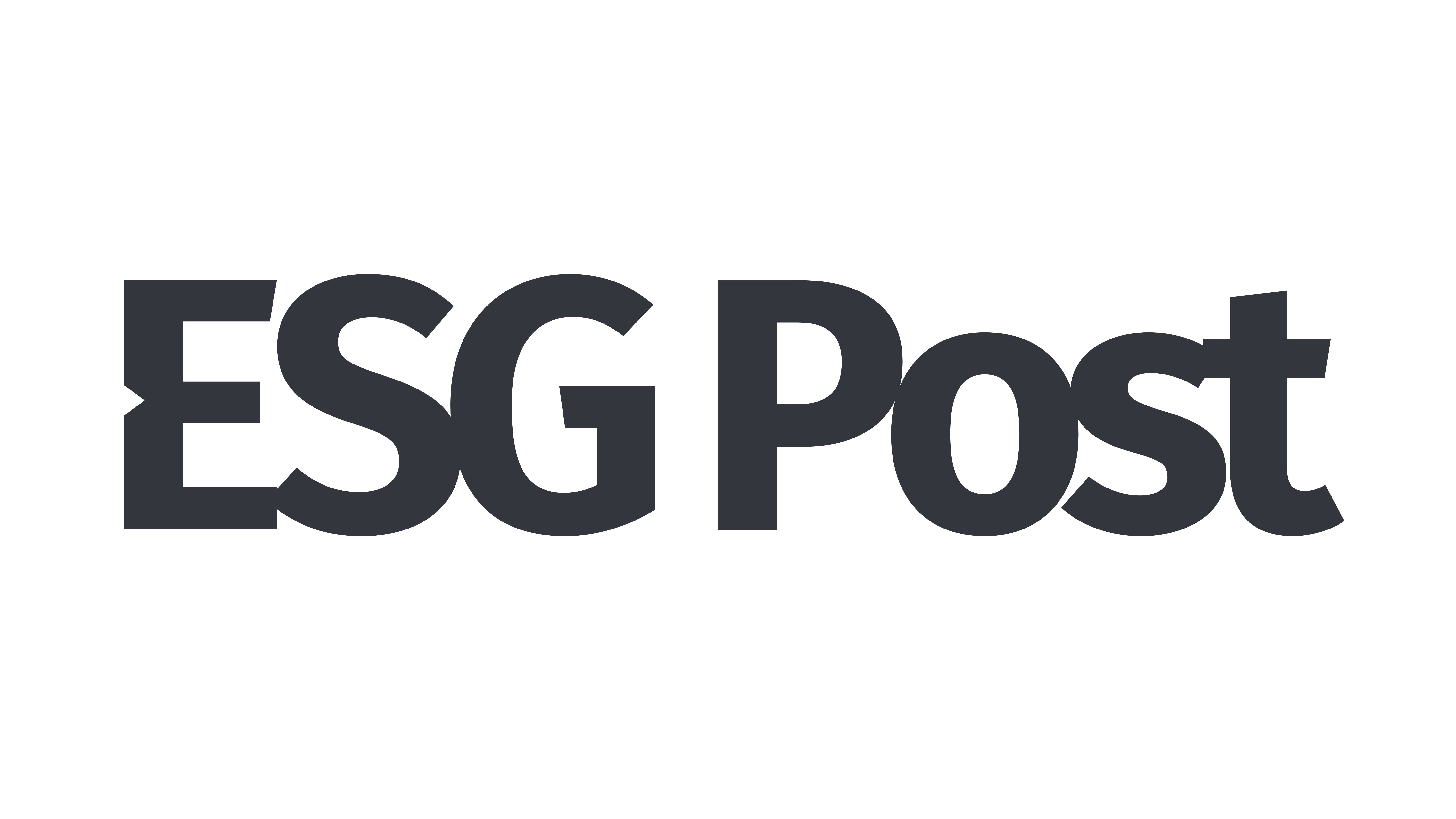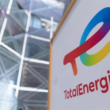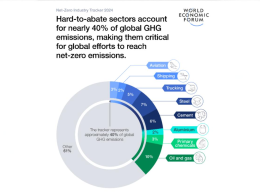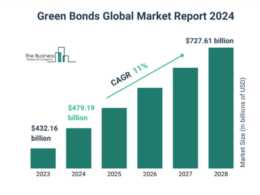E Ink Holdings, a pioneer in low-carbon ePaper technology, secured Silver in Asia’s Best Workplace Reporting at the 11th Asia Sustainability Reporting Awards (ASRA). In this exclusive interview, Chief Sustainability Officer Ingo Lin reflects on the milestone and the journey behind it.
“For us, sustainability reporting goes beyond information disclosure—it represents the integration of strategy, concrete actions, and collaboration across global sites,” Lin says.
He also discusses the company’s climate achievements, double materiality approach, and the rigorous processes that helped E Ink earn industry-wide recognition.
Congratulations on winning at the 11th Asia Sustainability Reporting Awards. What does this recognition mean for your sustainability team and your organisation?
We are delighted to receive the Asia Sustainability Reporting Awards. This recognition reflects the collective efforts of our sustainability team and the entire E Ink organisation to advance transparency and meaningful sustainability practices.
For us, sustainability reporting goes beyond information disclosure. It represents the integration of strategy, concrete actions, sustainable products, and collaboration across global sites.
E Ink embeds sustainability throughout its operations, from low-carbon ePaper innovation and green manufacturing to employee engagement, responsible supply chain management, and social inclusion. This recognition also reinforces our commitment to continuous improvement and our long-term climate ambitions.
We believe true sustainability combines innovation, environmental responsibility, and social progress to create lasting value for both business and society.
Sustainability reporting has evolved rapidly. How has your reporting approach matured over the past few years, and what were the biggest lessons from this journey?
E Ink’s sustainability reporting has matured into a more analytical and strategic platform that connects performance data with long-term business goals. In recent years, we have strengthened data governance, expanded disclosure depth, and improved the alignment of sustainability metrics with operational and financial results.
The process now emphasises measurable outcomes and cross-functional verification, supported by external assurance to enhance reliability and comparability. Broader stakeholder engagement also ensures that our reporting remains relevant to evolving expectations and global standards.
The key lesson from this journey is that effective reporting drives better decision-making. It transforms data into insight, strengthens accountability, and supports continuous improvement that enhances both governance and business resilience.
The ASRA judges emphasise rigour, transparency, and impact. Which parts of your report do you feel best demonstrate these qualities?
We believe the rigor, transparency, and impact of our reporting are best demonstrated through our climate disclosures, sustainability governance, and measurable performance results. Our reports follow recognised global standards to ensure reliability, consistency, and comparability.
E Ink’s climate reporting demonstrates analytical depth through scenario analysis, risk evaluation, and clearly defined emission reduction pathways verified by international initiatives. Our governance system connects sustainability performance with executive accountability, while workplace, supply chain, and product indicators highlight how sustainability drives operational excellence and social contribution.
Transparency is reinforced through third-party assurance, external data validation, and open communication of both achievements and challenges. Together, these practices build stakeholder confidence and demonstrate how E Ink translates sustainability principles into measurable progress.
Could you walk us through the process of materiality assessment — and how you are now integrating double materiality or value-chain impacts into your reporting?
E Ink’s materiality assessment follows a structured and transparent process designed to ensure that sustainability priorities reflect both business relevance and stakeholder expectations. We identify and assess key topics through international standards, peer benchmarking, industry analysis, and stakeholder engagement, evaluating their significance to our long-term strategy.
The results are reviewed internally to ensure sound governance and data consistency. In recent years, we have enhanced our approach to include value-chain impacts, considering how our products and operations influence the environment and society beyond our direct footprint.
By integrating these findings into strategy and reporting, we strengthen the connection between sustainability and enterprise performance, enabling us to move from risk management toward innovation, accountability, and continuous improvement across the organisation.
How do you ensure data accuracy and credibility across complex topics such as GHG emissions, supply-chain sustainability, and human rights?
E Ink ensures data accuracy and credibility through a structured sustainability data management system with clear responsibilities and verification procedures. Each business unit collects and validates its own data, which is then cross-reviewed to ensure consistency and completeness.
For quantitative topics such as greenhouse gas emissions, energy use, and waste management, we apply international standards including ISO 14064 and ISO 14067 and engage independent external verifiers to ensure transparency. In supply chain sustainability and human rights, we conduct regular assessments, audits, and third-party reviews to confirm compliance with our sustainability expectations.
We also maintain traceable data systems and internal audits to strengthen accuracy and comparability over time. These measures ensure that our reporting remains credible, verifiable, and reflective of our commitment to integrity and continuous improvement.
What new sustainability frameworks (for example, ISSB or TNFD) are you preparing to align with, and what challenges or opportunities do they bring?
Beyond existing frameworks such as GRI and SASB, E Ink is preparing to align with the ISSB standards, particularly IFRS S1 and S2, to meet emerging global disclosure expectations. This reflects our commitment to further enhance consistency, comparability, and clarity in sustainability reporting.
Adapting to these frameworks presents challenges, especially the need for deeper data identification, validation, and cross-departmental coordination. It demands more time and expertise to achieve the precision required by these standards. Yet this process also brings important benefits, it sharpens our understanding of risks and opportunities and strengthens the integration of sustainability into corporate strategy.
By staying aligned with evolving international standards, E Ink continues to build a robust and future-ready reporting system that supports both organisational resilience and stakeholder confidence.
Reporting aside, which sustainability initiative or achievement from the past year are you personally most proud of?
One of the accomplishments I value most from the past year is E Ink’s continued progress in carbon reduction and renewable energy transition. In 2024, we reduced Scope 1 and 2 greenhouse gas emissions by 42% compared with 2021, surpassing interim targets under the SBTi framework. Our renewable energy usage reached 58% globally, demonstrating strong momentum toward our climate commitments.
Equally meaningful is how our low-carbon ePaper technology contributes to broader decarbonisation. Through applications in transportation, public information systems, and digital signage, we help partners cut energy use and emissions.
These results show how E Ink turns climate ambition into real impact, combining innovation and collaboration to create meaningful progress toward a more sustainable and low-carbon future.
How do you engage internal teams and business units in the sustainability agenda so that reporting reflects genuine performance, not just compliance?
At E Ink, sustainability is part of how we operate, not a separate initiative. We engage internal teams through clear goals, transparent communication, and shared accountability. Each unit sets its own sustainability targets aligned with company priorities and monitors performance through defined metrics.
Collaboration across departments ensures that sustainability is embedded in operations, from product development and manufacturing to procurement and human resources. Regular training and workshops also help employees understand how their work contributes to our overall sustainability objectives.
By linking sustainability to daily decision-making and performance management, reporting becomes a reflection of genuine progress rather than compliance. This shared responsibility fosters a culture where sustainability is achieved collectively across the organisation.
Many companies are still struggling to link sustainability KPIs with business results. How has your organisation made that connection visible in its strategy and disclosures?
E Ink integrates sustainability KPIs directly into its business strategy so that environmental and social performance contributes to measurable outcomes. Indicators such as greenhouse gas reduction, renewable energy use, and resource circularity illustrate how sustainability metrics align with operational efficiency, cost management, and product innovation.
Sustainability performance is incorporated into management reviews and executive evaluations, ensuring accountability across all business functions. Financial and non-financial data are disclosed together to demonstrate how progress in carbon management, supply chain performance, and employee development strengthens overall competitiveness.
By connecting sustainability KPIs with tangible operational and financial results, E Ink demonstrates that sustainability enhances both resilience and enterprise value, turning commitment into measurable growth and long-term performance.
Finally, what advice would you give to other sustainability professionals aspiring to reach ASRA-winning standards in their reports?
From E Ink’s experience, excellence in sustainability reporting comes from integrating authenticity, rigor, and strategic focus. A strong report should follow recognised global standards while reflecting the company’s own sustainability journey and how governance, innovation, and collaboration drive progress. Our reporting process emphasises accountability, cross-functional coordination, and third-party assurance to ensure transparency and credibility.
Sustainability professionals should view reporting as a way to create value rather than meet a requirement. Connecting data with strategy, sharing both achievements and challenges, and demonstrating meaningful impact make reporting more effective and engaging.
Ultimately, great reporting is built on shared commitment. When sustainability is integrated into how a company operates and makes decisions, reporting naturally reflects real performance and long-term vision.





















